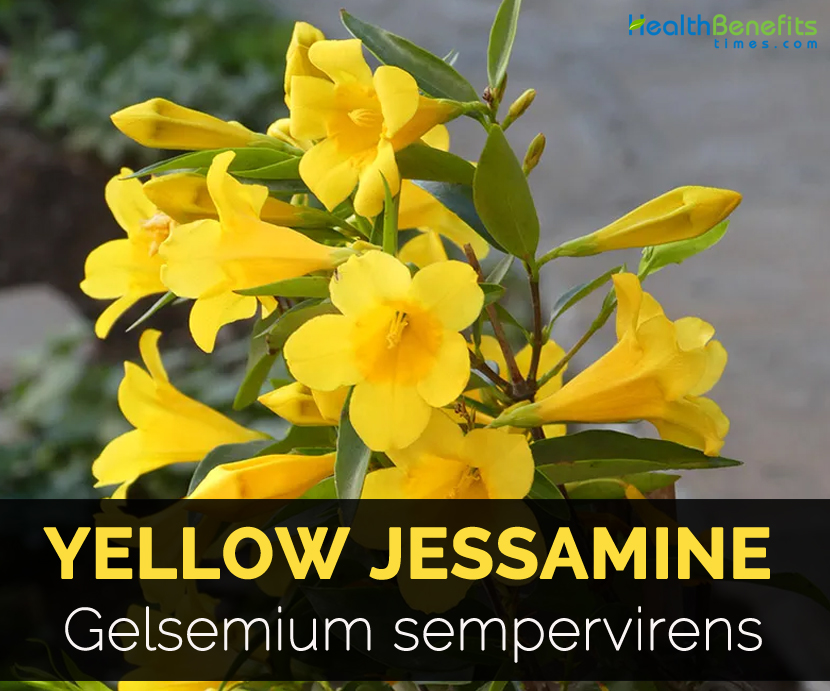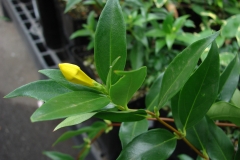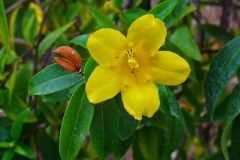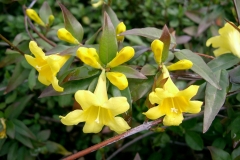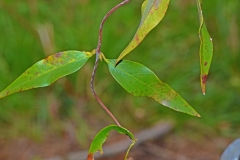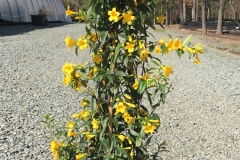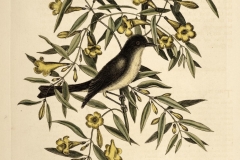Yellow Jessamine grows to the height of 3–6 m (9.8–19.7 ft) when provided suitable climbing support and lustrous or dark green. Flowers form in clusters. Individual flowers are yellow with orange center, trumpet shaped, about 3 cm (1.2 in) long and 2.5–3 cm (0.98–1.18 in) broad. Flowers are stongly scented and produce nectars which attracts pollinators.
Health Benefits of Yellow Jessamine
1. Cure for sore throats
Yellow Jessamine might be helpful for those suffering from sore throats.
2. Acute influenza
Sore throat may be a symptom of acute influenza. Other symptoms are fever, chills, weakness and headache. Yellow Jessamine alleviates these symptoms by strengthening immunity of the body.
3. Mental disorders
Yellow Jessamine is used as homeopathic remedy to help certain mental disorders. It is helpful for phobias, stage fright, nervous disorders and other terrors which may contribute to mental disorders.
Facts About Yellow Jessamine
| Yellow Jessamine Quick Facts | |
|---|---|
| Name: | Yellow Jessamine |
| Scientific Name: | Gelsemium sempervirens |
| Origin | Subtropical and tropical America: Honduras, Guatemala, Belize, Mexico (Chiapas, Oaxaca, Veracruz, Puebla, Hidalgo),[3] and southeastern and south-central United States (from Texas to Virginia) |
| Shapes | Oblong capsule, about 1 inch long |
| Taste | Bitter |
| Name | Yellow Jessamine |
|---|---|
| Scientific Name | Gelsemium sempervirens |
| Native | Subtropical and tropical America: Honduras, Guatemala, Belize, Mexico (Chiapas, Oaxaca, Veracruz, Puebla, Hidalgo),[3] and southeastern and south-central United States (from Texas to Virginia) |
| Common/English Name | Wild Woodbine, Yellow Jasmine, Gelsemium, False Jasmine, Evening Trumpetflower, Yellow Jessamine, Jasmine, Carolina jasmine, Jessamine, Evening trumpetflower, Gelsemium, Woodbine |
| Name in Other Languages | English: Carolina-jasmine, Evening trumpet-flower, Evening trumpetflower, Gelsemium, Woodbine, Yellow-jessamine; Swedish: Giftjasmin |
| Plant Size | 3-6 m (9.8–19.7 ft) high |
| Bark | Thin, yellowish brown |
| Leaf | Evergreen, lanceolate, 5–10 cm (2.0–3.9 in) long, 1–1.5 cm (0.39–0.59 in) broad |
| Medicinal part | The root |
| Flowering Season | January to April |
| Flower | Bright yellow, about 1 to 1 ½ inches long, the corolla funnel shaped |
| Fruit shape & size | Oblong capsule, about 1 inch long |
| Fruit Taste | Bitter |
| Bitter | October to June |
Uses
Has been used for many purposes by former generations, and still seems to be credited, but with careful administration. Close resemblance to Hemlock (Tsuga canadensis) in action.
It is an unrivalled febrifuge, possessing relaxing and antispasmodic properties. It is efficacious in nervous and bilious headache, colds, pneumonia, haemorrhage, leucorrhoea, ague-cake, but especially in all kinds of fevers, quietening all nervous irritability and excitement, equalizing the circulation, promoting perspiration, and rectifying the various secretions, without causing nausea, vomiting and purging, and is adapted to any stage of the disease. Useful in inflammation of bowels, diarrhoea, dysentery, but with great success in neuralgia, toothache, insomnia, wherever a sedative is called for.
In pelvic disorders of women it is a favourite herb. It is also of great service in various cardiac diseases, spermatorrhoea and other genital diseases, but its use should be confined to persons understanding the pathology.
Medicinal uses
- Roots are analgesic, diaphoretic, antispasmodic, febrifuge, hypnotic, nervine, mydriatic, sedative and vasodilator.
- Use it internally for treating neuralgia, sciatica, migraine, severe pain and toothache.
- Fresh root is used for treating various complaints such as flu, fevers and headaches.
Dose
The tincture is the form in which it is employed, the dose being from 10–15 drops in a wineglass half full of water; to be repeated every 2 hr. as long as required. In large doses it depresses the nervous system and gives rise to convulsions and toxic symptoms such as clouded vision, double-sightedness, or complete prostration, and inability to open the eyes. This, however, completely wears off in a few hours, leaving the patient refreshed and completely restored. When the effects are induced no more of the remedy is required.
Homoeopathic Clinical
Tincture of the bark of the root—Amaurosis, Anterior crural neuralgia, Aphonia, Astigmatism, Bilious fever, Brain (affections of), Cerebro spinal meningitis, Choroiditis, Colds, Constipation, Convulsions, Deafness, Dengue fever, Diarrhoea, Diphtheria, Dupuytren’s contraction, Dysentery, Dysmenia, Emotions (affects of), Epilepsy, Eyes (affections of), Fever, Fright, Gonorrhoea, Hay-fever, Headache, Heat (effects of), Heart (diseases of), Hydro-Salpingitis, Hysteria, Influenza, Intermittent fever, Jaundice, Labour, Liver (affections of), Locomotor ataxia, Mania, Measles, Meningitis, Menstruation (painful; suppressed), Metrorrhagia, Myalgia, Neuralgia, Nystagmus, Oesophagus (stricture of), Paralysis, Paralysis agitans, Paraplegia, Pregnancy (albuminuria of), Ptosis, Puerperal convulsions, Remittent fever, Retina (detachment of), Rheumatism, Sexual excess (effects of), Sleep (disordered), Spasms, Sun headache, Sunstroke, Teething, Tic-douloureux, Tobacco (effects of), Tongue (affections of), Toothache, Tremors, Uterus (affections of), Vertigo, Voice (loss of), Writer’s cramp.
Precautions
- Symptoms include nausea, sweating, dilated pupils, convulsions and lowered temperature.
- It can depress nervous system and causes death due to respiratory failure.
- Excessive use causes heaviness of eyelids, difficulty moving the eyeball, double vision, vomiting and dryness of mouth.
Side effects
- It can cause weakness, dizziness, double vision, paralysis of the spinal cord and even death.
- It is used in homeopathic medicines for treating acute phobias, fever and paroxysmal cough.
- Its use causes skin allergies in people.
References:
https://www.itis.gov/servlet/SingleRpt/SingleRpt?search_topic=TSN&search_value=29932#null
https://en.wikipedia.org/wiki/Gelsemium_sempervirens
https://www.encyclopedia.com/medicine/drugs/pharmacology/gelsemium
http://tropical.theferns.info/viewtropical.php?id=Gelsemium+sempervirens
http://www.sfrc.ufl.edu/extension/4h/plants/Yellow_jessamine/index.html
http://www.naturalmedicinalherbs.net/herbs/j/jasminum-humile=yellow-jasmine.php
http://healthnbeautyarticles.blogspot.com/2015/11/yellow-jessamine-gelsemium-sempervirens.html


